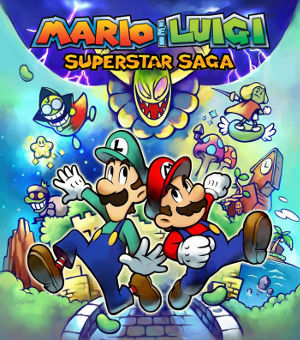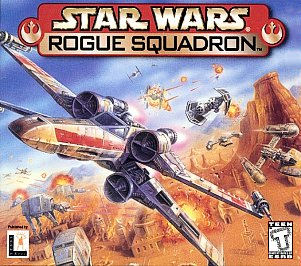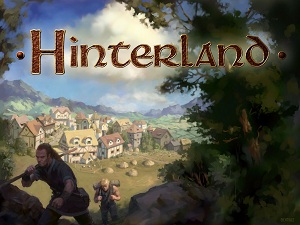
Roguelike is a style of role-playing game traditionally characterized by a dungeon crawl through procedurally generated levels, turn-based gameplay, grid-based movement, and permanent death of the player character. Most roguelikes are based on a high fantasy narrative, reflecting their influence from tabletop role-playing games such as Dungeons & Dragons.
Survival horror is a subgenre of horror games. Although combat can be part of the gameplay, the player is made to feel less in control than in typical action games through limited ammunition or weapons, health, speed, and vision, or through various obstructions of the player's interaction with the game mechanics. The player is also challenged to find items that unlock the path to new areas and solve puzzles to proceed in the game. Games make use of strong horror themes, such as dark mazelike environments and unexpected attacks from enemies.

A role-playing video game, a role-playing game (RPG) or computer role-playing game (CRPG), is a video game genre where the player controls the actions of a character immersed in some well-defined world, usually involving some form of character development by way of recording statistics. Many role-playing video games have origins in tabletop role-playing games and use much of the same terminology, settings, and game mechanics. Other major similarities with pen-and-paper games include developed story-telling and narrative elements, player character development, complexity, as well as replay value and immersion. The electronic medium removes the necessity for a gamemaster and increases combat resolution speed. RPGs have evolved from simple text-based console-window games into visually rich 3D experiences.

Mario & Luigi: Superstar Saga is a 2003 role-playing game developed by AlphaDream and published by Nintendo for the Game Boy Advance. It was re-released for the Wii U's Virtual Console in 2014, Nintendo Switch Online Service in 2023, and remade for the Nintendo 3DS as Mario & Luigi: Superstar Saga + Bowser's Minions in 2017. In the game, Mario and Luigi travel to the Beanbean Kingdom in order to combat Cackletta and Fawful, who stole Princess Peach's voice for the purpose of harnessing the power of a special artifact called the Beanstar.

Replay value is the potential of a video game or other media products for continued play value after its first completion. Factors that can influence perceived replay value include the game's extra characters, secrets and alternate endings. The replay value of a game may also be based entirely on the individual's tastes. A player might enjoy repeating a game because of the music, graphics, gameplay or because of product loyalty. Dynamic environments, challenging AI, a wide variety of ways to accomplish tasks, and a rich array of assets could result in a high replay value.

Paper Mario: The Thousand-Year Door is a 2004 role-playing game developed by Intelligent Systems and published by Nintendo for the GameCube. The Thousand-Year Door is the second game in the Paper Mario series following Paper Mario, and is part of the larger Mario franchise. In the game, when Mario and Princess Peach get involved in the search for a mystic treasure that holds great fortune, Peach is kidnapped by an alien group called the X-Nauts; Mario sets out to find the treasure and save the princess.
Tactical role-playing games, also known as strategy role-playing games and in Japan as simulation RPGs, are a video game genre that combines core elements of role-playing video games with those of tactical strategy video games. The formats of tactical RPGs are much like traditional tabletop role-playing games and strategy games in appearance, pacing, and rule structure. Likewise, early tabletop role-playing games are descended from skirmish wargames such as Chainmail, which were primarily concerned with combat.
An action role-playing game is a subgenre of video games that combines core elements from both the action game and role-playing genre.

Rogue Galaxy is an action role-playing video game developed by Level-5 and published by Sony Computer Entertainment for the PlayStation 2. The game was released in Japan in December 2005, in North America in January 2007, and in most European countries and Australia in September of the same year. A director's cut of the game was released in Japan in March 2007, which includes all of the added features and improvements made for the North American and European localizations.

Star Wars Rogue Squadron III: Rebel Strike is an action video game developed by Factor 5 and published by LucasArts for the GameCube. The game is set during the original Star Wars trilogy and recreates battles that take place during those films. The game follows Rogue Squadron, which, under the command of Luke Skywalker and Wedge Antilles, uses starfighters to engage and defeat the Galactic Empire.

Star Wars: Rogue Squadron is an arcade-style flight action game co-developed by Factor 5 and LucasArts. The first of three games in the Rogue Squadron series, it was published by LucasArts and Nintendo and released for Microsoft Windows and Nintendo 64 in December 1998. The game's story was influenced by the Star Wars: X-wing – Rogue Squadron comics and is set in the fictional Star Wars galaxy, taking place primarily between events in the films Star Wars and The Empire Strikes Back. The player controls Luke Skywalker, commander of the elite X-wing pilots known as Rogue Squadron. As the game progresses, Skywalker and Rogue Squadron fight the Galactic Empire in 16 missions across various planets.

Jeanne d'Arc is a tactical role-playing video game developed by Level-5 and published by Sony Computer Entertainment for the PlayStation Portable (PSP). The game was released in Japan on November 22, 2006, and was localized for a release in North America on August 21, 2007. Jeanne d'Arc was Level-5's first role-playing video game of this kind, as well as the studio's first production for the PSP. The title's narrative makes use of various fantasy elements, and is loosely based on the story of Joan of Arc and her struggles against the English occupation of France during the Hundred Years' War in the early 15th century.

Orcs & Elves is an adventure role-playing video game for the mobile phone and Nintendo DS. It was developed by id Software and Fountainhead Entertainment and published by EA Mobile and licensed by Nintendo for the DS version. It was released for mobile phones in May 2006 before being ported to the Nintendo DS in November 2007. The game is based on Doom RPG's engine and is id's first original intellectual property since Quake. The DS port of the game included graphical enhancements, such as 3D environments and camera cutscenes, along with improved character sprites, two new levels and the use of the touchscreen feature.

Final Fantasy Crystal Chronicles: My Life as a King is a video game developed for the WiiWare service of the Wii console by Square Enix. Square Enix decided to make a game for the WiiWare service that would be high profile, and it was decided that the game would be a simulation game and, later in development, a Final Fantasy title.

Hinterland is a high fantasy role-playing video game with city-building elements by Tilted Mill Entertainment. It was released on September 30, 2008 on the Steam content delivery system, and has since been made available at other digital distribution websites. Hinterland: Orc Lords, a cumulative expansion, was released to digital distribution and retail in March 2009. As the title suggests, the primary addition to the game was the ability to play as Orc characters.

Artix Entertainment, LLC is an independent video game developer and publisher founded by Adam Bohn in October 2002. It is best known for creating browser-based role-playing video games—including AdventureQuest, DragonFable, MechQuest, and AdventureQuest Worlds—using Adobe Flash. The company released its first title for iOS and Android devices in March 2011 and on October 19, 2016, released its first 3D game, AdventureQuest 3D, with the Unity game engine.
Western role-playing video games are role-playing video games developed in the Western world, including The Americas and Europe. They originated on mainframe university computer systems in the 1970s, were later popularized by titles such as Ultima and Wizardry in the early- to mid-1980s, and continue to be produced for modern home computer and video game console systems. The genre's "Golden Age" occurred in the mid- to late-1980s, and its popularity suffered a downturn in the mid-1990s as developers struggled to keep up with changing fashion, hardware evolution and increasing development costs. A later series of isometric role-playing games, published by Interplay Productions and Blizzard Entertainment, was developed over a longer time period and set new standards of production quality.
Paper Mario is a video game series and part of the Mario franchise, developed by Intelligent Systems and produced by Nintendo. It combines elements from the role-playing, action-adventure, and puzzle genres. Players control a paper cutout version of Mario, usually with allies, on a quest to defeat the antagonist, primarily Bowser. The series consists of six games and one spin-off; the first, Paper Mario (2000), was released for the Nintendo 64, and the most recent, Paper Mario: The Origami King (2020), for the Nintendo Switch.














